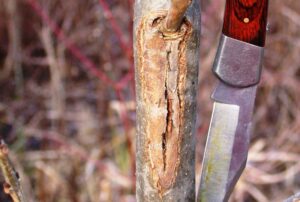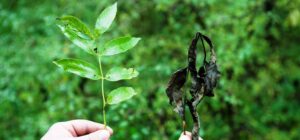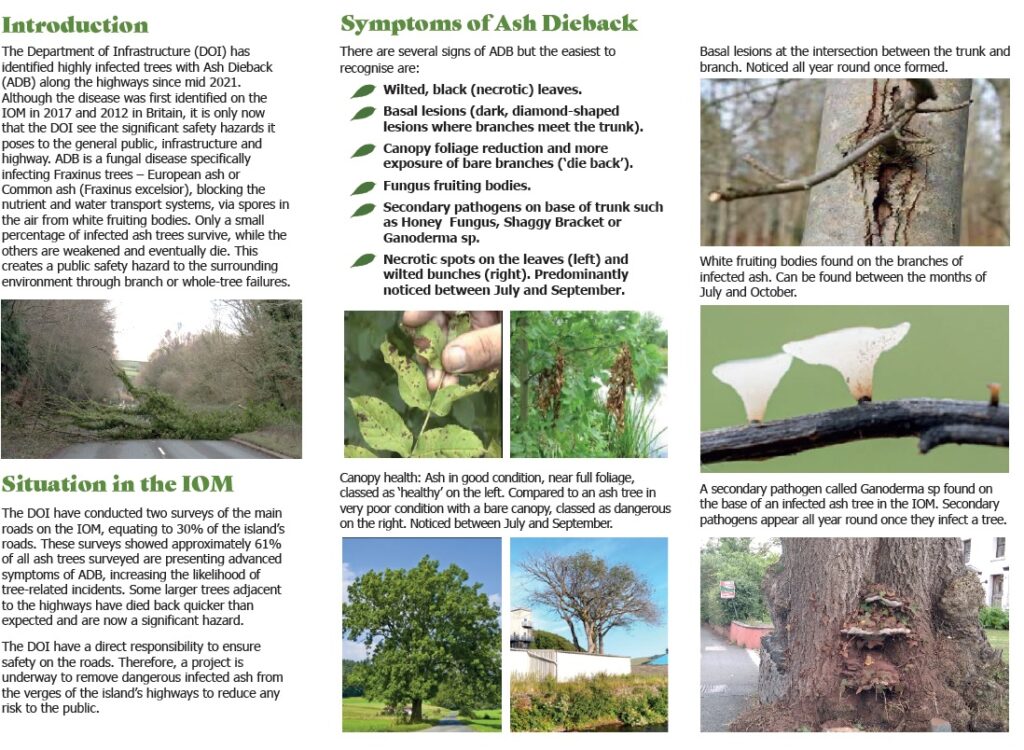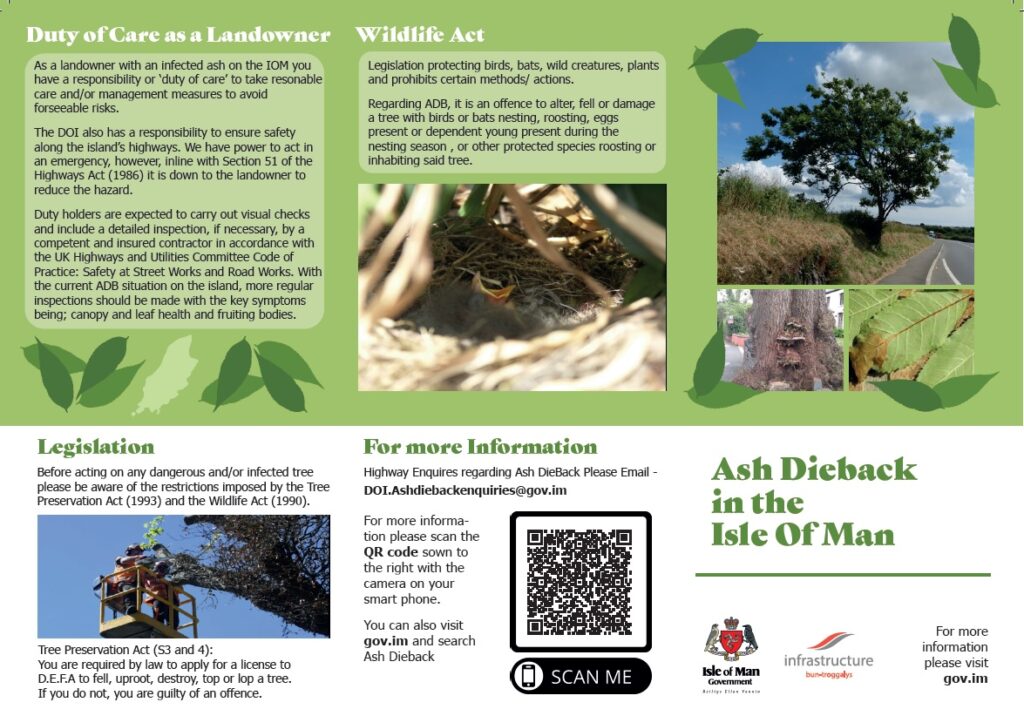Ash die-back (Chalara fraxinea)
Ash dieback is caused by a fungus and has led to widespread loss of ash in Europe in recent years. First discovered in Poland in 1992, more than 90% of their trees have died, a devastating loss. Since then it has spread slowly west to other European countries.

The disease mannifests itself on the bark of the ash with diamond shaped lessions around twigs and small branches. Leaves also turn black in summer on the affected branches, often in the tops of the tree initially.

The disease is spread as the extremely small mould spores are blown by the wind from one tree to the next. The only treatment is immediate felling and burning of the timber.
Ash makes up around one quarter of the trees on the island, aproximately 300,000 trees, and can be found in woodlands and hedgerows across the Island. It is extremely important for wildlife, landscape value and biodiversity.
Fortunately, the IOM Woodland Trust used to grow ash stock from native seed, but we have now stopped further propagation and planting of ash trees until the disease has largely subsided.


Mountain ash is not related to common ash and is, therefore, not affected or susceptible to the disease.
For more information, please look at the UK Forestry Division website where there is a video of ash tree die-back and what to look for.
http://www.forestry.gov.uk/chalara#Symptoms